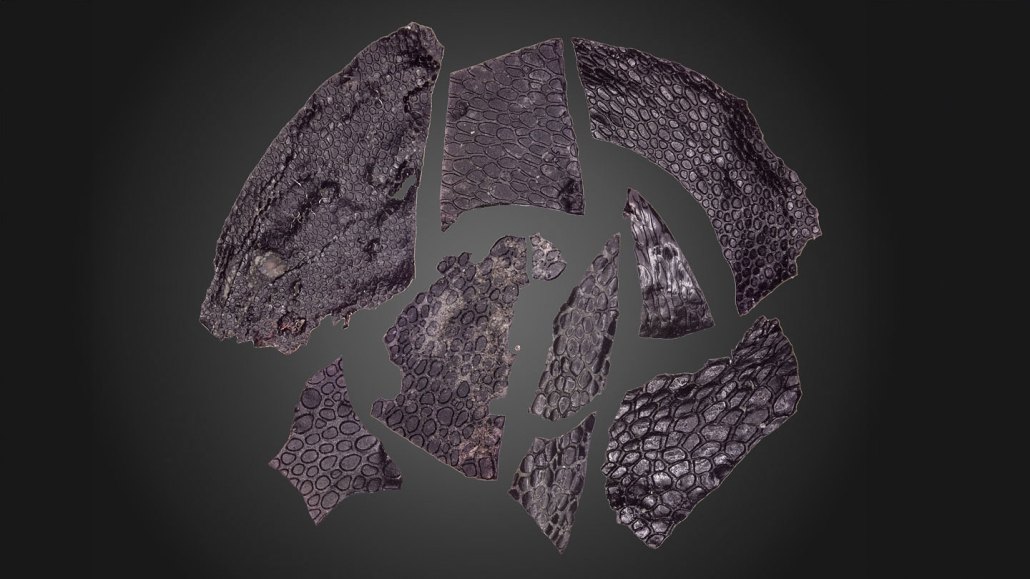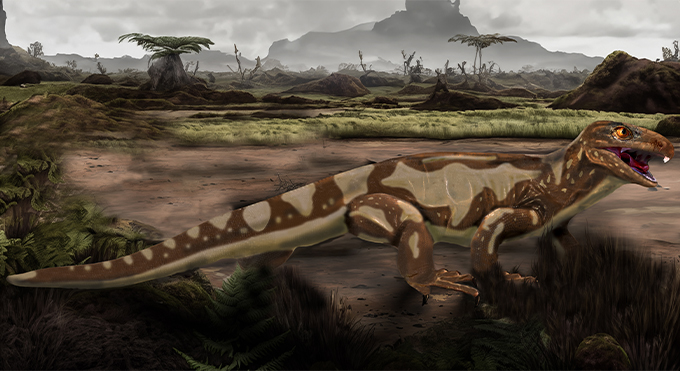The oldest known fossilized skin shows how life adapted to land
At nearly 290 million years old, it’s one of the only fossilized skins found from the Paleozoic Era

A dagger-shaped fossil cast (the two pieces left of the bottom right piece) is the oldest mummified skin specimen ever found. It and seven skin impressions (also pictured) belong to an early four-legged vertebrate called an amniote. The dark color comes from staining by petroleum and tar that seeped through sediments.
E.D. Mooney et al/Current Biology 2024








